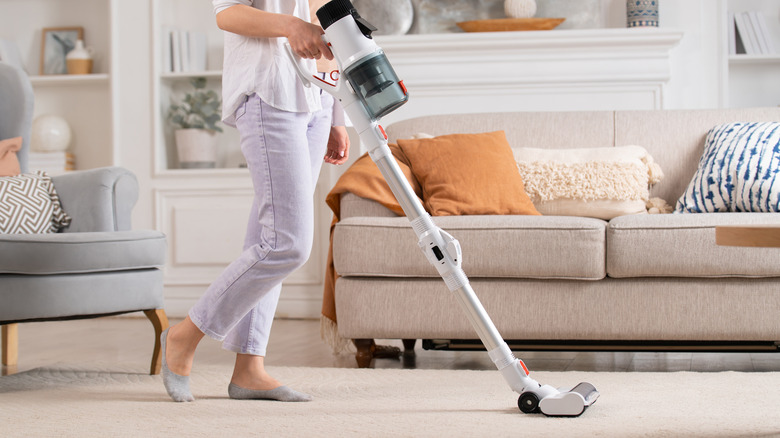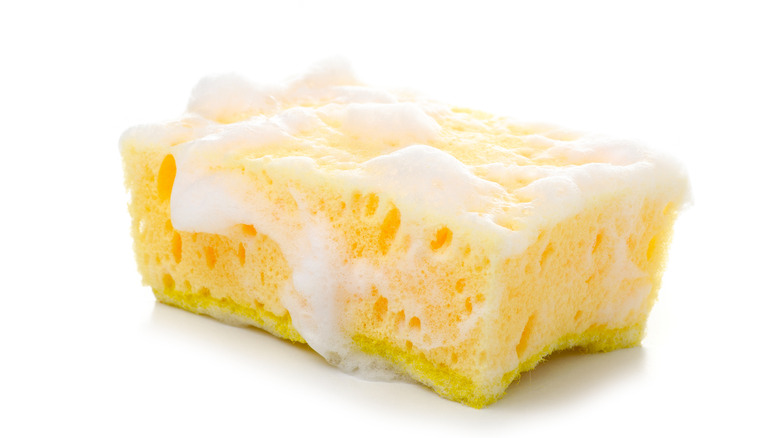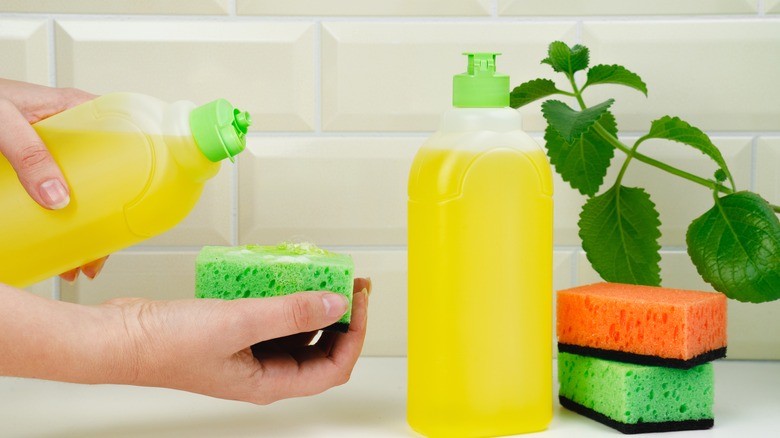This Object Could Be The Dirtiest Thing In Your Home
Thanks to the COVID-19 pandemic (and progressive technology), most of us have become familiar with the concept of remote working. Our homes have become more than just a place to which we come back from the office for rest and recuperation. A 2020 American Time Use Survey found that around 62% of our time awake was spent within the four walls of our own homes, which was a 12% increase compared to the previous year (via Flowing Data).
Even if people are beginning to transition back to working in offices, there's no denying the fact that we spend a considerable amount of our time in our houses — eating, sleeping, bathing, cooking, and merrymaking. Having a serene and tidy environment to call home is often associated with general mental clarity and wellness, per Verywell Mind, with some people even finding it therapeutic to declutter their living spaces. Even if you don't identify with the meditative effects of cleaning, you likely at least agree that cleaning your home before the winter season is important.
But, did you know that there are some things in your home that could require more of your attention when you're on cleaning mode? In fact, there is one object in particular that might be the dirtiest thing in your house.
The dish sponge could be the dirtiest object in your home
You pick it up to clean a good amount of messes in your home — dirty dishes, coffee spilled on the dining room table, or a grimy countertop after a particularly untidy cooking session. According to virology professor and germ expert Charles Gerba, this makes the dish sponge the dirtiest object in your house (via Family Handyman). The bacteria in your home may not be most active in the obvious places like the toilet seat and on kitchen counters, even if these are the places that come to your mind first. The kitchen sponge is actually the perfect breeding ground for bacteria: It's absorbent, it's used to rub food particles off surfaces every day, and it's moist.
The German Research Center for Environmental Health uncovered 362 different types of bacteria from a study involving 14 dish sponges that was published by Scientific Reports. Yes, you run them under water and squeeze them dry as much as you can, but sponges are nearly impossible to keep clean, per Web MD. Author of the study and professor at Furtwangen University Markus Egert shares, "Three trillion human beings put into Grand Canyon would create a similar concentration of 'biomass' as bacteria in a used kitchen sponge" (via Popular Science).
Now that you know your dish sponge is not all it seems, how do you clean it?
How you think you should be cleaning a dish sponge is probably not the best way
Cleaning a kitchen sponge might not be as simple as you think. In fact, Markus Egert shares that the normal cleaning methods don't really work. "The remaining species, which are, for unknown reasons, more resistant to the cleaning methods than the ones that get killed, proliferate again and grow up to higher shares than before," he explains (via Popular Science). And if you thought throwing your sponges in the microwave could do the trick, think again, per Family Handyman.
The solution is merely to replace your kitchen sponges frequently, at least once every month, according to Health Guide. Alternatively, you can switch to antimicrobial sponges or silicone scrubbers as options. They might give you more of a shelf life, reports Family Handyman. If you want to stick with the traditional dish sponge, make sure you air it out and store it in a clean area your kitchen that's well-ventilated so that it can dry properly after every use, Health Guide adds.
Your dish sponge might be a lifesaver when it comes to spills anywhere in your house and for cleaning your kitchen, but it's definitely not worth keeping in your home for longer than recommended.


